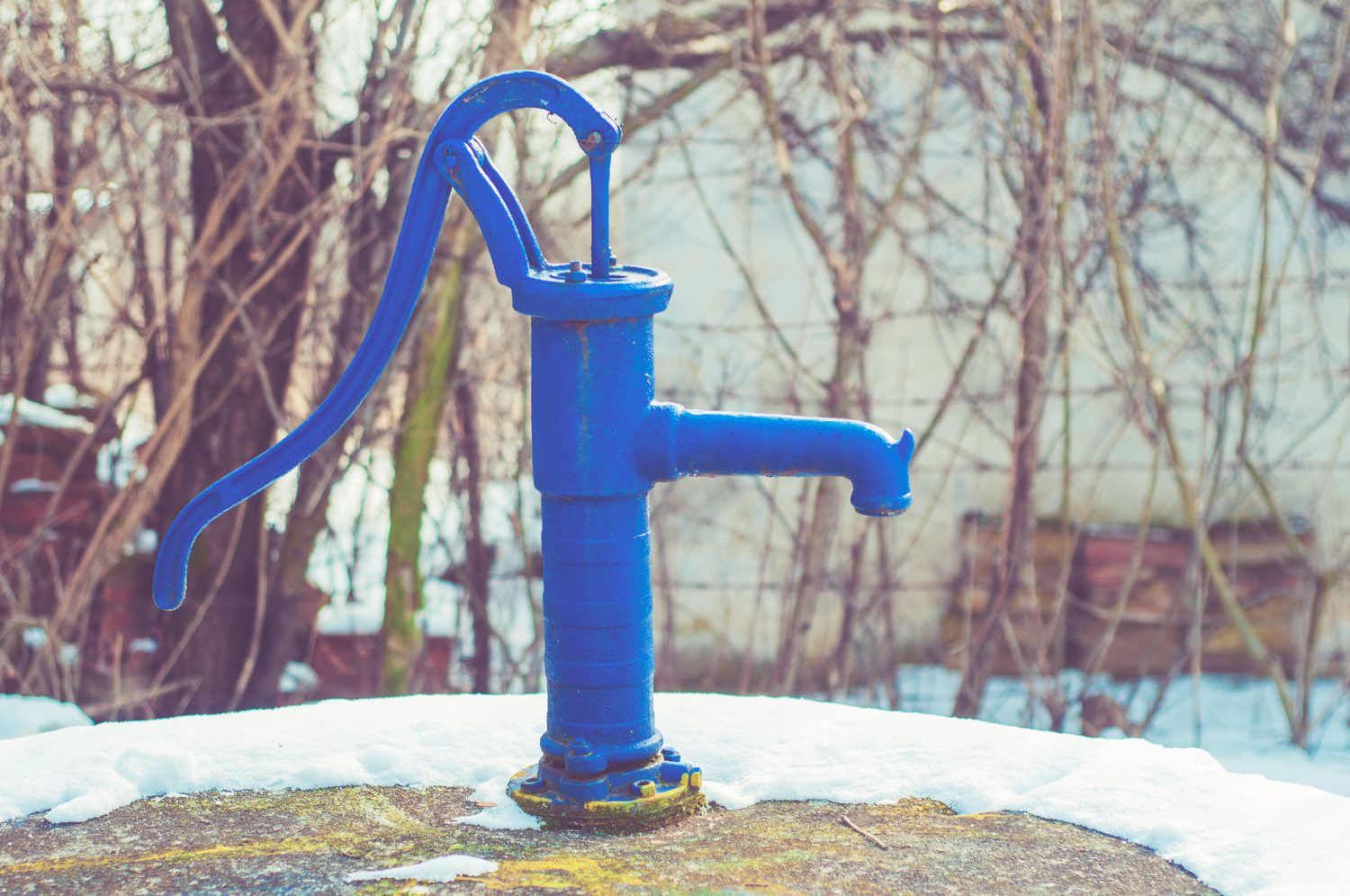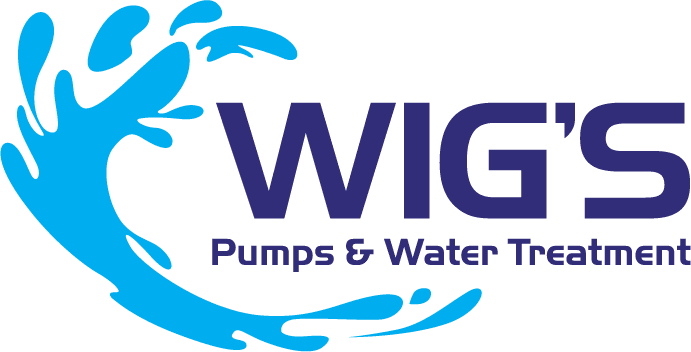
- Selecting the right water pump starts with understanding your specific needs, including water source, usage volume, and desired pressure.
- Matching the right type of pump, centrifugal, submersible, jet, or booster, ensures long-term efficiency and performance in any environment.
- Wig’s Pumps & Water Treatment provides personalized support and practical solutions for residential, agricultural, and commercial water pump systems.
Water pumps may be out of sight most of the time, but they play an essential role in our homes, farms, businesses, and even during emergencies. Whether you’re sourcing water from a well, managing floodwater, or moving liquids through a large-scale agricultural system, the right pump can mean the difference between efficiency and frustration.
However, choosing the right water pump isn’t as simple as picking a product off the shelf. Several factors come into play, like water source, required pressure, flow rate, energy consumption, and specific use case. In this guide, we’ll walk through the major types of pumps, when and where to use them, and what to consider before you invest in one.
Understanding the Purpose Behind the Pump
Every pump is built with a specific function in mind. Before diving into brands, specs, or prices, the first step is to define the problem the pump needs to solve. Are you looking to increase water pressure in your home? Irrigate crops? Manage wastewater? Provide water to livestock in remote areas? Each of these scenarios requires a different type of system with different strengths.
For instance, a homeowner on a private well may need a submersible pump to draw water from underground, while a farmer might lean toward a high-capacity centrifugal pump to move large volumes quickly. Misapplying a pump can lead to inconsistent performance, higher power costs, and premature failure. The most effective way to make a smart decision is to start with the end use and work backward.
Common Types of Water Pumps and Their Applications
Let’s take a look at the primary categories of water pumps and when each one fits best.
Centrifugal Pumps
These are the workhorses of the pump world, ideal for moving water over short to moderate distances. They use a rotating impeller to generate velocity, converting it to flow. Centrifugal pumps excel in applications where consistent pressure and volume are needed, such as:
- Irrigating fields or landscaping
- Circulating water in HVAC systems
- Transferring water from one tank to another
They function best with thin, clean liquids and require priming before use if not self-priming. One important note: their efficiency drops significantly when lifting water from depths, so they’re less suited for deep wells.
Submersible Pumps
As the name suggests, these are installed below the water level. They’re sealed to prevent electrical shorting and are commonly used for deep well water supply, sump pits, or wastewater management. Because the motor is submerged, they’re quieter and less prone to overheating.
Submersible pumps are especially effective when you need to push water upwards over long vertical distances, such as drawing from deep aquifers. Their tight design also prevents air pockets, making them highly reliable in steady operation.
They’re ideal for locations with limited space or where noise control is a priority. With fewer moving parts exposed to the elements, they generally require less maintenance and offer long service life in both residential and commercial applications.
Jet Pumps
Jet pumps are another common solution for drawing water from wells. They use a combination of suction and pressure to move water and come in two types: shallow well and deep well. Shallow well jet pumps sit above ground and pull water up from depths of up to 25 feet. Deep well jet pumps use a two-pipe system and can handle depths of around 100 feet or more.
While these are less energy-efficient than submersibles, jet pumps are easier to service since they’re not submerged. Their reliability depends greatly on proper installation and priming.
They are often used in cottages, older homes, or rural properties where above-ground systems are preferred. With the right configuration, they can provide steady, dependable water pressure for both household and light agricultural needs.
Booster Pumps
Sometimes, the issue isn’t about accessing water—it’s about moving it with more force. That’s where booster pumps come in. They’re designed to increase water pressure in homes or buildings when gravity-fed systems or municipal supply lines fall short.
Booster pumps can be installed alongside other systems (like pressure tanks or filtration setups) and can make a noticeable difference in comfort, especially in multi-story homes or irrigation setups with long runs of hose or piping.
They are also commonly used in commercial buildings, high-rise apartments, or anywhere consistent water pressure is needed for appliances, showers, or sprinkler systems. With proper sizing, they improve flow without excessive strain on plumbing fixtures or the main supply line.
Trash Pumps and Utility Pumps
Trash pumps are heavy-duty, portable units built to handle water with debris—think construction sites, stormwater cleanup, or farm runoff. These are rugged, high-capacity pumps with large impellers and durable casings. They’re a solid choice when dealing with muddy, sandy, or debris-filled water.
Their wide openings allow solids to pass through without clogging, making them ideal for environments where water quality varies. With proper care, they offer dependable performance in demanding conditions.
In contrast, utility pumps are designed for light-duty tasks like draining pools, removing water from basements, or transferring clean water from tanks. They’re generally portable and convenient, though not built for long-term or high-volume use.
Utility pumps shine in temporary or seasonal applications where quick water removal is needed without the need for permanent installation.
Key Factors to Consider Before Choosing
Once you understand what each pump type offers, it’s time to narrow the field based on specific parameters. Here are several factors to weigh before making your final choice.
Flow Rate (GPM or LPM)
This indicates how much water the pump can move over a certain time frame. A residential user may only need 8-12 GPM for basic needs, while agricultural systems might require several hundred gallons per minute. Oversizing a pump wastes energy; undersizing leads to frustration. Look at your daily or hourly water requirements and work from there.
Total Dynamic Head (TDH)
TDH accounts for the vertical lift (how high the pump needs to move water) and friction loss (how much resistance the water faces through piping, fittings, and filters). Calculating this properly is critical. If your TDH is underestimated, the pump won’t deliver sufficient pressure.
Power Source
Electric pumps are common in residential settings, while gas-powered models are preferred for remote or mobile applications like agriculture or construction. Solar-powered pumps are gaining traction in off-grid setups, especially in areas with reliable sunlight. Matching the pump to your available power source ensures consistent performance.

Water Quality
If the water contains sand, sludge, or organic matter, a standard pump could clog or wear out prematurely. Trash pumps or pumps with specialized strainers can handle contaminants better. If the water is clean but contains minerals, adding filtration or water conditioning is often a good idea.
Installation & Maintenance
Some pumps require professional installation, especially submersibles and deep well jet pumps. Consider whether the system needs seasonal servicing, occasional priming, or replacement parts. A lower-cost pump might seem appealing upfront, but could result in higher long-term maintenance.
When Professional Advice Matters
Water pumps are mechanical systems, and while you can research specs and compare features online, there’s still a place for local knowledge and experience. Working with a water system professional means tapping into firsthand knowledge about regional water tables, soil types, typical weather conditions, and maintenance realities.
For example, a pump that works well in southern Alberta might need adjustments or replacements in Saskatchewan due to seasonal temperature shifts or differing groundwater levels. Professional insight can also help you identify whether an issue is due to the pump itself or something downstream, like a pressure tank or pipe restriction.
In some cases, the right solution isn’t one pump, but a combination of components: a well pump plus a pressure tank and booster, or a transfer pump supported by filtration and float switches. A well-designed system balances efficiency, performance, and longevity.
Why Sizing the System Is More Important Than the Brand
Brand loyalty is strong in the pump world, but performance depends more on correct sizing and configuration than on logo. A premium pump that’s mismatched to the job will still perform poorly. That’s why successful pump installations begin with site-specific questions:
- How far will the water travel?
- What elevation changes are involved?
- How clean is the source water?
- How many gallons per day are needed?
When those answers are clear, the rest of the system can be designed to fit. This results in smoother operation, fewer repairs, and lower energy bills over time.
Upgrading or Replacing an Existing Pump
If you already have a pump system but are seeing signs of inefficiency like reduced pressure, short cycling, or noise, it might be time for a checkup or replacement. Age, sediment buildup, changes in water demand, or pressure tank issues can all affect performance. Upgrading to a more energy-efficient model or modern pressure controller can solve persistent problems without requiring a complete overhaul.
When replacing a pump, use the opportunity to assess the entire system. Sometimes, issues blamed on the pump are symptoms of wider plumbing challenges.
Final Thoughts
Choosing the right water pump is a practical decision rooted in function, longevity, and understanding your specific water system. Whether the pump will serve a single household or support a large commercial operation, its job is foundational to your water access and peace of mind.
Good choices start with clear information. Matching flow rate, head, power source, and pump type to your exact needs can deliver years of reliable service and better water management.
Need help figuring out which pump is right for your home, farm, or business? At Wig’s Pumps & Water Treatment, we’re happy to walk through your setup, discuss performance goals, and offer solutions that are grounded in real-world conditions. Reach out with your questions—we’re here to help you find the right fit.
